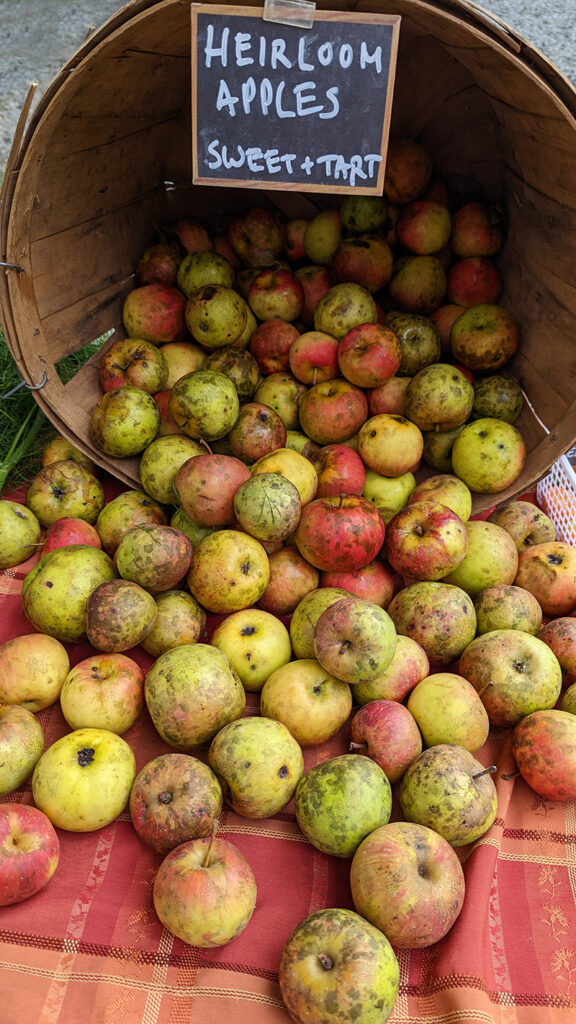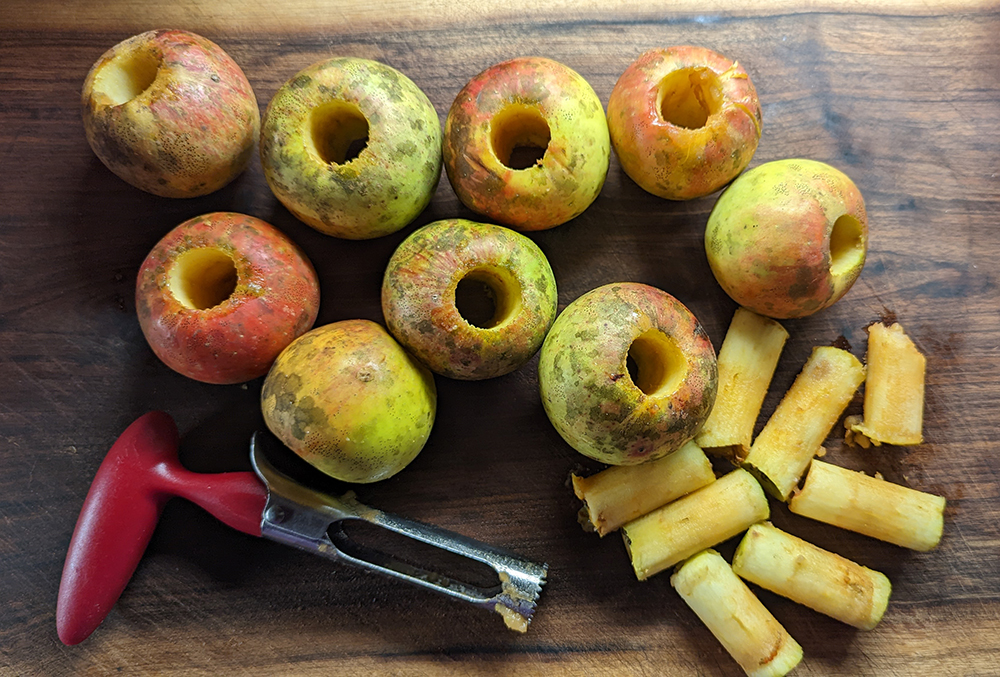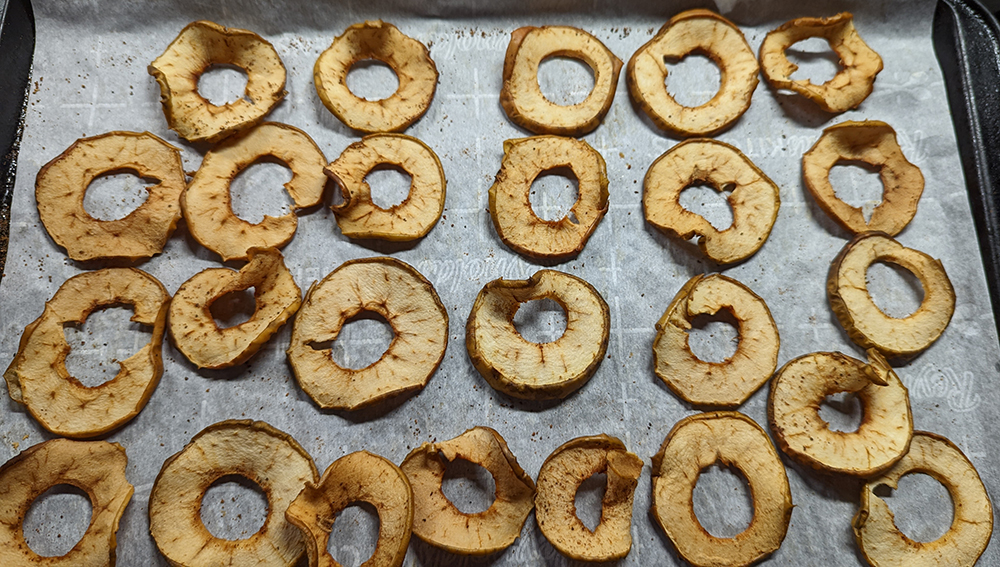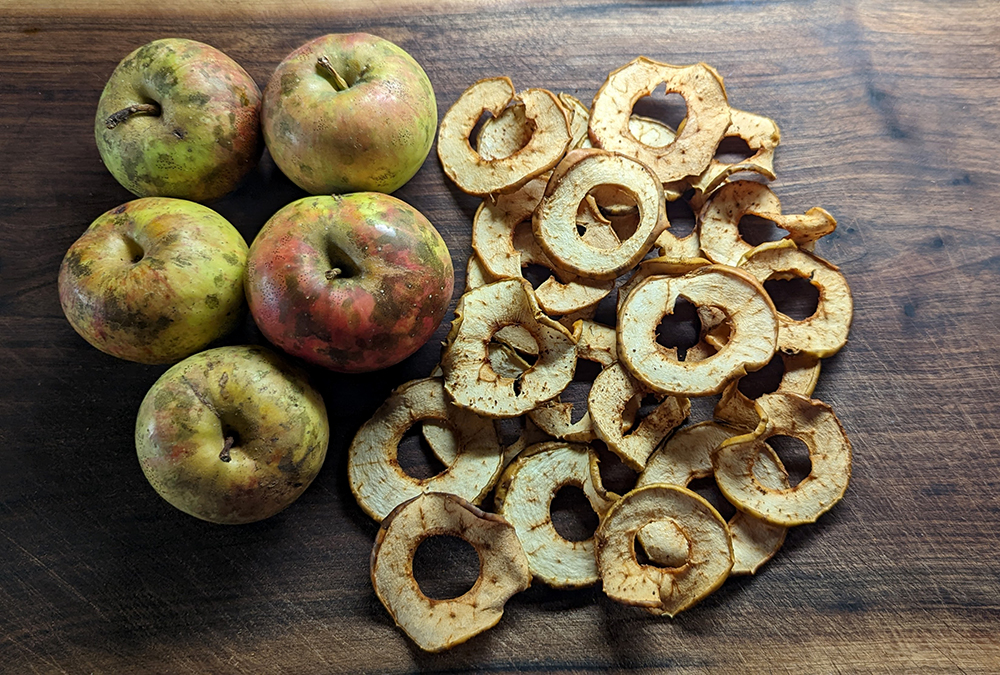Drying Apples Connects Us to Southern History
go.ncsu.edu/readext?893251
en Español / em Português
El inglés es el idioma de control de esta página. En la medida en que haya algún conflicto entre la traducción al inglés y la traducción, el inglés prevalece.
Al hacer clic en el enlace de traducción se activa un servicio de traducción gratuito para convertir la página al español. Al igual que con cualquier traducción por Internet, la conversión no es sensible al contexto y puede que no traduzca el texto en su significado original. NC State Extension no garantiza la exactitud del texto traducido. Por favor, tenga en cuenta que algunas aplicaciones y/o servicios pueden no funcionar como se espera cuando se traducen.
Português
Inglês é o idioma de controle desta página. Na medida que haja algum conflito entre o texto original em Inglês e a tradução, o Inglês prevalece.
Ao clicar no link de tradução, um serviço gratuito de tradução será ativado para converter a página para o Português. Como em qualquer tradução pela internet, a conversão não é sensivel ao contexto e pode não ocorrer a tradução para o significado orginal. O serviço de Extensão da Carolina do Norte (NC State Extension) não garante a exatidão do texto traduzido. Por favor, observe que algumas funções ou serviços podem não funcionar como esperado após a tradução.
English
English is the controlling language of this page. To the extent there is any conflict between the English text and the translation, English controls.
Clicking on the translation link activates a free translation service to convert the page to Spanish. As with any Internet translation, the conversion is not context-sensitive and may not translate the text to its original meaning. NC State Extension does not guarantee the accuracy of the translated text. Please note that some applications and/or services may not function as expected when translated.
Collapse ▲
Heirloom apples from In Good Heart Farm at the Pittsboro Farmers’ Market. Photo by Debbie Roos.
Whenever I see heirloom apples at our local farmers’ markets I can’t help but think about Lee Calhoun. Lee lived in Chatham County and developed a passion for old southern apples in the 1970s when he realized these apple trees were disappearing along with the people who knew about them. Lee and his wife Edith spent decades traveling around the south, tracking down these heirloom varieties and meeting with elderly southerners who knew their history. All of their research went into his book Old Southern Apples which was first published in 1995. Lee passed away in 2020 but his legacy and all those he educated and inspired lives on.

Lee Calhoun. Photo by Debbie Roos.

Chatham County resident Lee Calhoun wrote the popular book Old Southern Apples. The book is now out of print but can be found at local libraries and downloaded on Kindle. Photo by Debbie Roos.
I met Lee soon after moving to North Carolina in 1999 to work for North Carolina Cooperative Extension. I organized several workshops and orchard tours with Lee over the years to teach local folks about these prized southern apples.

Lee Calhoun talks about heirloom apple production at his home orchard in 2009. Lee planted dwarf trees and trained a single stem on wires using the oblique cordon system. This high density management system allowed him to plant literally hundreds of varieties in his small orchard. Photo by Debbie Roos.
I always enjoyed visiting with Lee at his home orchard and hearing firsthand his stories about how important apples were to southern families, especially rural families, in the days before canning and refrigeration. Apples were unrivaled among fruits for their nutrition, taste, keeping ability, and diversity of uses. Most rural families had large orchards where apples could be harvested for six months of the year. They could not only be eaten fresh but dried, cooked, and processed for pies, apple sauce, apple butter, apple cider, apple brandy, and cider vinegar (used in large quantities to preserve foods in the days before canning and refrigeration). Lee has a section in his book that goes into great detail about the various ways apples were used.
I was especially intrigued reading the discussion of dried apples in Lee’s book. Many southern farm families produced way more apples than they could consume, but fresh apples were challenging to sell due to their perishability and bulk which made transport difficult, especially on rugged rural roads. Drying apples increased their shelf life and made them much easier to transport. Lee describes how dried apples were a very important source of income for farm families, especially after the Civil War. Rural families would sell dried apples to local merchants who would then transport by wagon and rail for shipping to larger cities. In 1872, according to the USDA, approximately $400,000 worth of dried apples were shipped from High Point, NC alone. That would be over $9.7 million in today’s dollars! In 1877 four million pounds of dried apples produced in North Carolina, Tennessee, Virginia, and Georgia were shipped to Baltimore. Some of these dried apples were for domestic consumption but many were shipped to Germany and Great Britain where they were prized for cooking. By 1907, over 45 million pounds of dried apples were exported by the United States! These dried exports continue today: in 2021, according to the USDA, the U.S exported over $37 million worth of dried apples.
By the late 1800s there were some large apple drying factories in the south but most of the apples were dried by families at their orchards. Southerners preferred tart apples for drying because they ripened while it was hot and that made drying easier, plus tart apples sweetened when dried and were preferred for cooking which is how most dried apples were used (like for that southern delicacy, fried pie!).
Most apples were sun-dried, a process that required about two sunny days. Apples were peeled, cored, sliced, and placed on clean cloths or feed sacks on the ground or roof of a shed. Many orchards used a dry house for drying apples. This was a small rustic wood building with a woodstove and good air circulation. Sliced apples were stacked on shelves or wooden racks from floor to ceiling. Sometimes apples were dried in tobacco barns while the tobacco was curing.
Thanks to modern technology, today it’s easy to dry apples in the oven or using a food dehydrator. I like crunchy apples for fresh eating and drying is a good way to use apples that are not necessarily crisp or crunchy. I set my oven at 225° F, then core the apples, slice into thin, uniform slices, and place on parchment paper on a baking sheet. If I am drying them to eat as a snack I like to sprinkle with a little cinnamon or nutmeg but if using for cooking I would dry them plain. For chewy slices it usually takes about 30-45 minutes per side (flipping the slices over when they begin to curl at the edges). For crispier slices it may take longer – just check periodically until they are the desired texture. Now…I need to find a recipe for fried pie!

Cored locally grown heirloom apples. Photo by Debbie Roos.

Dried apples fresh out of the oven. The longer they stay in the oven the crispier the texture. Photo by Debbie Roos.

Locally grown heirloom apples are great for drying! Photo by Debbie Roos.
Want to buy old southern apples or grow your own? Century Farm Orchards in Reidsville will be having their Fall Open House on Saturday November 5 and November 12. Visitors will be able to buy fruit trees and fruit and also cider from James Creek Cider House.


